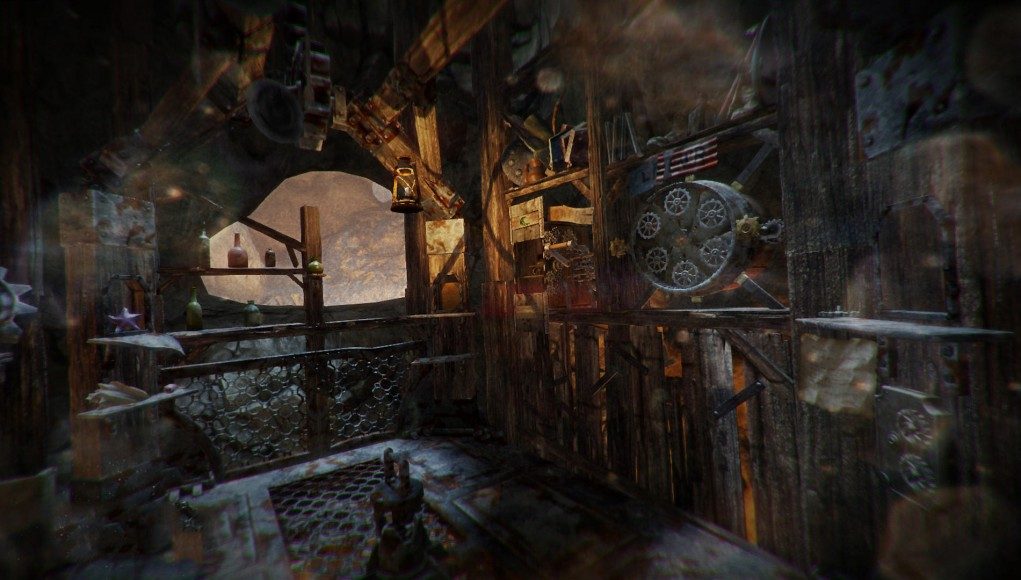SteamVR made a powerful debut at last week’s GDC 2015. Valve collaborated with a diverse group of indie VR developers to create demos for the system. Now SteamVR gameplay footage has emerged from The Gallery: Six Elements demo.
See Also: HTC Vive and SteamVR Hands-on – A Stage of Constant Presence
The Gallery: Six Elements is one of the earliest made-for-VR games out there. Production began after developer Cloudhead Games ran a successful Kickstarter back in 2013.
The Gallery demo on SteamVR represented one of the more realistic takes as far as art/design is concerned. In the game you’re stuck in a broken elevator with a friendly rock-giant named Boulder, who is outside of the lift guiding your journey. The demo is essentially a puzzle where you have to find the right pieces to fix the elevator to continue on your way. For a demo, I’m really quite impressed with the production value. You can tell that Cloudhead Games has been at this whole ‘VR game design’ thing for quite some time.
Polygon’s Ben Kuchera got an extended look at the demo which shows the impressive experience from start to finish.
Kuchera shared an excellent anecdote from his time in the demo which really drives home the level of immersion achieved by SteamVR:
The Gallery demo provided one of my favorite moments of the Valve demos; I was trying to see if a piece of paper would burn on a candle and I accidentally knocked the candle over. Without thinking I was able to duck down, reach forward, and snatch the candle as it fell towards the ground. There was no abstraction between my movements in real life and how the game tracked my head and hands, my real-world reflexes translated perfectly into the game.
Two years ago at GDC 2013, in the days of the Oculus Rift DK1, I had a similar experience where I used the Razer Hydra motion controller in the now aged Sixense Tuscany demo:
The moment that really sold me was when I tossed a basketball up into the air above my head. I threw it in a way that the trajectory of the ball would have it landing somewhere slightly behind me. My natural reaction was to look at the ball as it was coming down, lean back, and grab it — and that’s exactly what I did. I DIDN’T have to think to myself, ‘how do I need to move the controls in order to do what I want to do,’ I simply followed the ball as it flew through the air, reached up behind me, and plucked it out of the air.
At the time, I called that moment “The most fun I’ve had in VR yet.” SteamVR, of course, takes interactions like this to a new level. Interacting with virtual worlds just like you do with the real world is the next step for immersion in VR.







